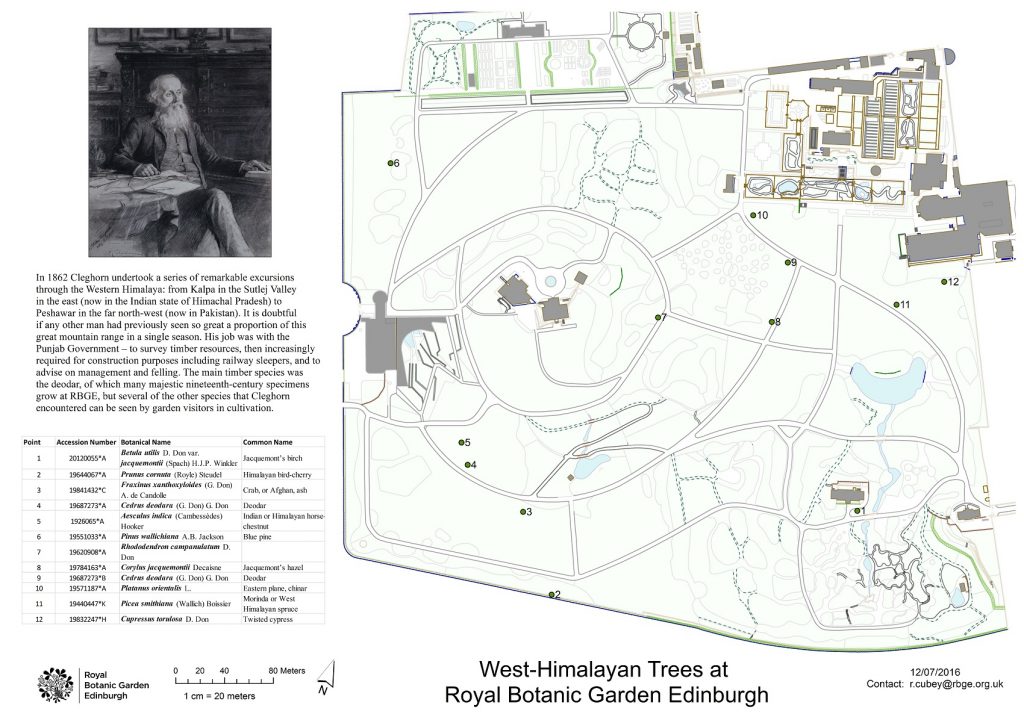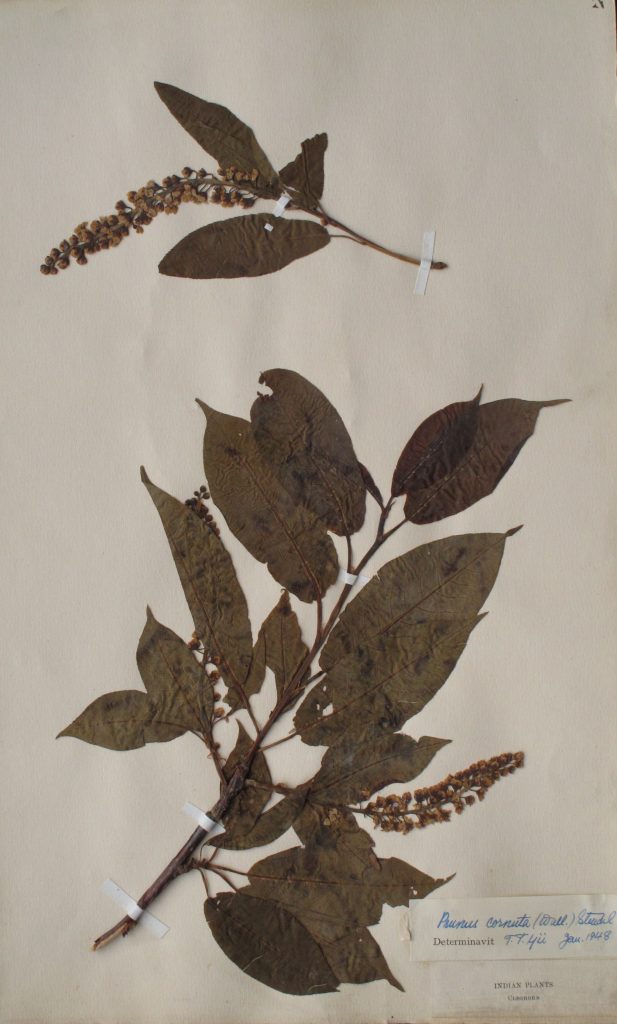 Walking home though the garden recently, after a hard day in the herbarium, my eye alighted on a small tree that I must have passed many thousands of times, but had never previously noticed. Such are the riches of the RBGE collection (both ‘living’ and ‘dead’), that, even after a 30-year career, they continue to inspire and inform. The evening light was striking the tree’s bark and even its smallest branches were (unusually for a city-centre location) entirely gilded with the lichen Xanthoria parietina. Even more surprising, on consulting its label, was to discover that the tree was Fraxinus xanthoxyloides. Not only was the wood of this particular specimen yellow both within and without, but it took me back to a 2014 trip to the Western Himalayas, when I followed in Cleghorn’s footsteps, and had seen what he called the ‘crab ash’ growing in the wild in the spectacular valleys of the Sutlej and the Chenab rivers. This gave me the idea to look for other trees that had been familiar to Cleghorn while working in the Himalayas. These were easily discovered by consulting the Garden’s richly multi-faceted database, BG-Base. Being a Luddite I couldn’t do this myself, but Alan Elliott kindly used the system that allows the plotting of individual plant accessions onto a garden map. The result is a trail of eleven species, allowing a self-guided tour starting at the East Gate, so that others can be transported (at least mentally) to Cleghorn’s ‘rugged ascents and descents of the Tibetan Alps suited only to goats and monkeys and men with hardened nerves’.
Walking home though the garden recently, after a hard day in the herbarium, my eye alighted on a small tree that I must have passed many thousands of times, but had never previously noticed. Such are the riches of the RBGE collection (both ‘living’ and ‘dead’), that, even after a 30-year career, they continue to inspire and inform. The evening light was striking the tree’s bark and even its smallest branches were (unusually for a city-centre location) entirely gilded with the lichen Xanthoria parietina. Even more surprising, on consulting its label, was to discover that the tree was Fraxinus xanthoxyloides. Not only was the wood of this particular specimen yellow both within and without, but it took me back to a 2014 trip to the Western Himalayas, when I followed in Cleghorn’s footsteps, and had seen what he called the ‘crab ash’ growing in the wild in the spectacular valleys of the Sutlej and the Chenab rivers. This gave me the idea to look for other trees that had been familiar to Cleghorn while working in the Himalayas. These were easily discovered by consulting the Garden’s richly multi-faceted database, BG-Base. Being a Luddite I couldn’t do this myself, but Alan Elliott kindly used the system that allows the plotting of individual plant accessions onto a garden map. The result is a trail of eleven species, allowing a self-guided tour starting at the East Gate, so that others can be transported (at least mentally) to Cleghorn’s ‘rugged ascents and descents of the Tibetan Alps suited only to goats and monkeys and men with hardened nerves’.



Rob
To see the record of the plant (and in some cases an image) in the RBGE online catalogue click on
Betula utilis var. jacquemontii ‘Inverleith’
Prunus cornuta
Fraxinus xanthoxyloides
Cedrus deodara
Aesculus indica
Pinus wallichiana
Rhododendron campanulatum
Corylus jacquemontii
Cedrus deodara
Platanus orientalis
Picea smithiana
Cupressus torulosa
Robert Cubey
Plant Records Officer
RBGE